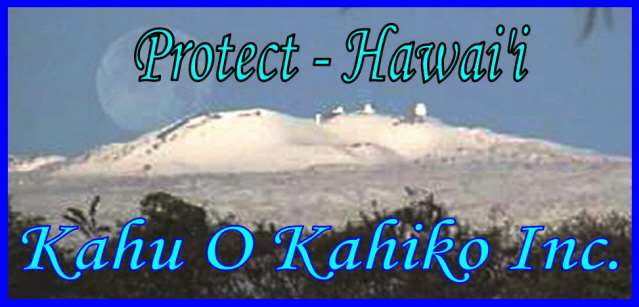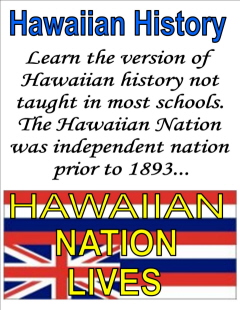
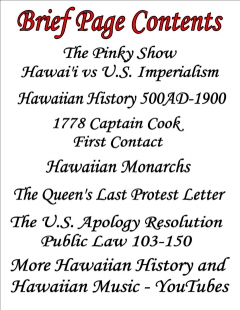



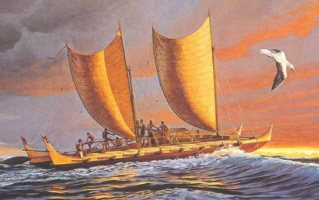
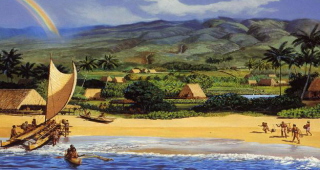
500AD ~ 1900AD
In the beginning as one story goes...
In the beginning as one story goes...
The Hawaiian Ridge is a fissure more than 1600 miles long on the floor of the Pacific Ocean. Along the top of this ridge protrude the individual domes that are the Hawaiian Islands. Before 300AD Hawaii was probably used as a base for peoples with a trans Pacific contact between Asia and the northwest coast of South America. Around 300-500 AD Polynesians from the South Pacific, probably the Marquesas Islands , found the Hawaiian Islands in double-hulled voyaging canoes. The first heiau (temple) was built on the Big Island of Hawaii in 500AD and by 900AD all the main islands were occupied. Heiau or temples were used to worship their two principal gods, KU, god of war and LONO, god of peace and agriculture.
Early Hawaiians lived in utopia until...
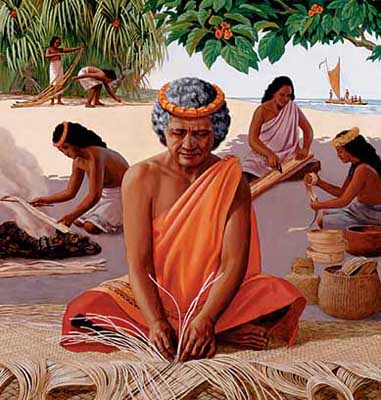
Tahitian explorers arrived in 1200AD and not only conquered the Marquesasians but enslaved them. The Tahitian priest Pa'ao started the "kahuna nui" or high-priest line which initiated a ruling king for each island. From Tahiti , Pa'ao brought Pili who was the father of the royal line leading to Kamehameha I. Social classes emerge and the Hawaiian culture begins to take a new form. The Hawaiians ate mostly vegatables and poi and supplemented their diet with fish and over 30 varieties of native limu (seaweeds). Noni and kukui were the most important herbs used to treat many different ailments...
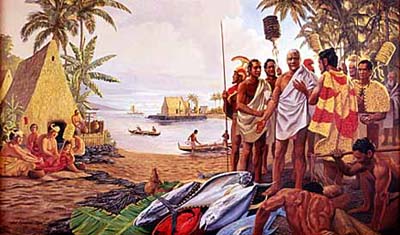
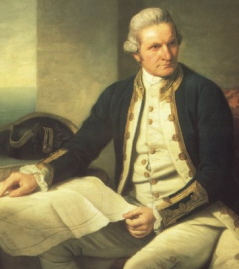


1778 CAPTAIN COOK
First Contact...
First Contact...
On his third voyage into the Pacific, the great explorer Captain James Cook, British commander of HMS Resolution and HMS Discovery, on January 18, 1778 found Oahu and Kauai. He was thought of by some Hawaiians as the reincarnation of Lono, one of their principal gods. He named Hawai'i the Sandwich Islands in honor of the Earl of Sandwich. He returned to Hawai'i a year later and dropped anchor in Kealakekua Bay on the Big Island .

Captain Cook was slain here on February 13, 1779 chasing after a stolen rowboat. because of European contact, contagious diseases such as cholera, measles and gonorrhea, decimated the Hawaiian population. The population was estimated at between 250,000 to 1 million when Captain Cook sailed into Kealakakua in 1779. By 1848 Hawaiians numbered 88,000.


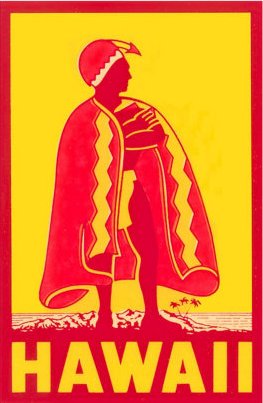
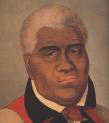
King Kamehameha I was born at Kokoiki in the Kohala district of the Island of Hawai'i about 1758. He grew into a courageous warrior and was said to have overturned the huge Naha Stone in Hilo. According to native belief, such a feat indicated superhuman strength and foreshadowed the inevitable conquest of all of Hawai'i. In 1785 Kamehameha married Ka'ahumanu, the daughter of one of his most trusted advisors.

In 1790, after attaining control of the remainder of Hawai'i Island, he successfully invaded the Islands of Maui, Lana'i, and Moloka'i. By 1810, he had unified all the inhabited islands of Hawai'i under his rule.
THE HAWAIIAN ISLANDS UNIFIED
In 1810 he unified the Hawaiian Islands under a single rule after negotiating a peace with Kauai. He believed he was destined by prophecy to unify the Islands and used western weapons to seize power. He shrewdly promoted trade with Europe and the United States. He died in 1819 in Kona.

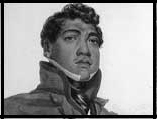
Kamehameha II takes control in 1819 and ordered the destruction of all heiau and the end to the kapu (taboo) system, idol worship, and he abolished the traditional Hawaiian religion. Kamehameha II formed a dual rulership with his wife, Kamamalu, that lasted 5 years. Kamehameha II sailed to England, with his queen, and died of measles on July 14, 1824. In the 1820s two new
forces entered Hawai 'i: the Congregationalist missionaries of the Calvinist ideology and New England whalers. The missionaries arrived just as the Hawaiians were abandoning their religious system.
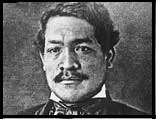
Kamehameha III proclaims the First Constitution which includes freedom of worship. US President John Tyler recognizes the Kingdom of Hawai'i in 1842. In 1845 the Hawaiian capital is moved from Lahaina to Honolulu. In 1845 Kamehameha III proclaims the Great Mehele, changing the concept of land useage. It converted traditional Hawaiian land usage (Ahupua'a) to fee-simple titles. Foreigners were
permitted to purchase land. Private estates were established. By 1893 foreigners controlled 90% of the lands of Hawai'i . Contract labor system was approved to bring foreign labor to the sugar and pineapple fields. By 1840 the forests of Hawai'i , Oahu , Molokai and Kauai were stripped of mountain sandalwood trees, one of the world's most valuable natural products.

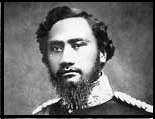
Kamehameha IV ascended to the throne after the death of his uncle. He and his wife were responsible for establishing Queens Hospital for sick and destitute Hawaiians. He translated the English Book of Common Prayer to his native language. He only reigned nine years and died of chronic bouts of asthma.
In 1865 the Hansen's Disease (leprosy) colony is established at Kalawao, Molokai. 1868 saw the first Japanese contract workers arrive in Hawai'i. In 1873 Father Damien de Veuster arrives on Molokai to aid the Hansen's disease victims. The first Portugese land in 1879.

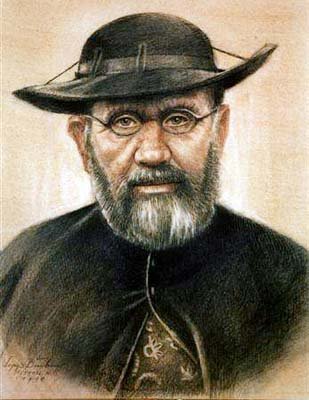
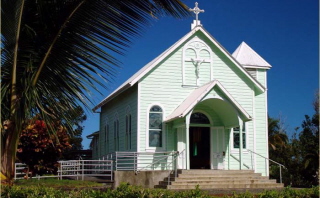
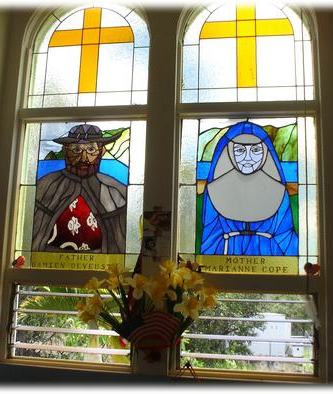
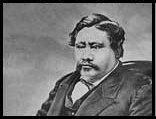
Kamehameha V— born as Lot Kapuāiwa — reigned as monarch of the Kingdom of Hawai ' i from 1863 to 1872. He was born 11 December 1830, and died on his 42nd birthday December 11, 1872. His motto was "Onipa`a": immovable, firm, steadfast or determined; he worked diligently for his people and kingdom and was described as the last great chief of the olden type, like his grandfather Kamehameha I.
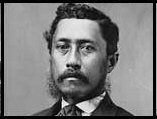
Lunalilo I, born William Charles Lunalilo, born January 31, 1835 and died February 3, 1874. Lunalilo I was king of the Kingdom of Hawai'i from January 8, 1873 until February 3, 1874. He was the most liberal king in Hawaiian history, but was the shortest reigning monarch of the monarchy.
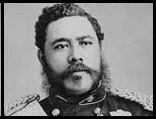
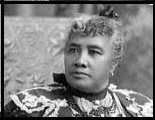
David Kalakaua "The Merry Monarch" was the first king in history to visit the United States. The Merry Monarch attempted to restore Hawaiian traditions. Hawai'i's famous hula festival held every April in Hilo is named after him. Kalakaua
died on a trip to San Francisco in 1891. His younger sister Liliu'okalani took the throne. She wanted to restore the power to the throne that was signed away by her brother Kalakaua. She was a victim of a hostile take over of the Hawaiian Government on January 17, 1893. The queen authored a number of songs. The best known Hawaiian song EVER is...
ALOHA OE
"Thus sweet memories come back to me
Bringing fresh remembrance of the past
Dearest one, yes, thou art mine own
From thee, true love shall ne'er depart
Farewell to thee, Farewell to thee (aloha oe)
Thou charming one who dwells in shaded bow'rs
One fond embrace 'ere I depart
Until we meet again"
"Thus sweet memories come back to me
Bringing fresh remembrance of the past
Dearest one, yes, thou art mine own
From thee, true love shall ne'er depart
Farewell to thee, Farewell to thee (aloha oe)
Thou charming one who dwells in shaded bow'rs
One fond embrace 'ere I depart
Until we meet again"
A little known protest letter Queen Liliu'okalani wrote prior to her death on November 11, 1917 was indeed her last poignant and now prophetic plea for justice.(Emphasis added)
THE QUEEN’S LAST PROTEST LETTER
"Oh, honest Americans, as Christians hear me for my down-trodden people! Their form of government is as dear to them as yours is precious to you. Quite as warmly as you love your country, so they love theirs. With all your goodly possessions, covering a territory so immense that there yet remain parts unexplored, possessing islands that, although new at hand, had to be neutral ground in time of war, do not covet the little vineyard of Naboth's, so far from your shores, lest the punishment of Ahab fall upon you, if not in your day, in that of your children, for "be not deceived, God is not mocked." The people to whom the sons now seek to despoil and destroy, are crying aloud to Him in their time of trouble; and He will keep His promise, and will listen to the voices of His Hawaiian children lamenting for their homes." Liliu’okalani
In 1897 98% of the Kanaka Maoli (the native Hawaiians) signed the Ku'e Petition which was opposed to the annexation and the TERROR that was inflicted on the Queen (imprisoned in her own palace) was begun on September 11, 1897, exactly 103 years to the day, that Americans now view as the date terrorism struck American soil and the World Trade Center of New York.
THE QUEEN’S LAST PROTEST LETTER
"Oh, honest Americans, as Christians hear me for my down-trodden people! Their form of government is as dear to them as yours is precious to you. Quite as warmly as you love your country, so they love theirs. With all your goodly possessions, covering a territory so immense that there yet remain parts unexplored, possessing islands that, although new at hand, had to be neutral ground in time of war, do not covet the little vineyard of Naboth's, so far from your shores, lest the punishment of Ahab fall upon you, if not in your day, in that of your children, for "be not deceived, God is not mocked." The people to whom the sons now seek to despoil and destroy, are crying aloud to Him in their time of trouble; and He will keep His promise, and will listen to the voices of His Hawaiian children lamenting for their homes." Liliu’okalani
In 1897 98% of the Kanaka Maoli (the native Hawaiians) signed the Ku'e Petition which was opposed to the annexation and the TERROR that was inflicted on the Queen (imprisoned in her own palace) was begun on September 11, 1897, exactly 103 years to the day, that Americans now view as the date terrorism struck American soil and the World Trade Center of New York.











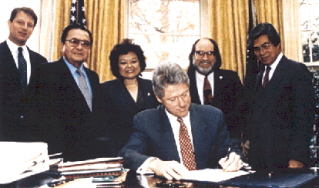



UNITED STATES
PUBLIC LAW 103-150
Congress Joint Resolution 19 Nov. 23, 1993 To acknowledge the 100th anniversary of the January 17, 1893 overthrow of the Kingdom of Hawaii, and to offer an apology to Native Hawaiians on behalf of the United States for the overthrow of the Kingdom of Hawaii.
Whereas, prior to the arrival of the first Europeans in 1778, the Native Hawaiian people lived in a highly organized, self-sufficient, subsistent social system based on communal land tenure with a sophisticated language, culture, and religion;
Whereas, a unified monarchical government of the Hawaiian Islands was established in 1810 under Kamehameha I, the first King of Hawaii;
Whereas, from 1826 until 1893, the United States recognized the independence of the Kingdom of Hawaii, extended full and complete diplomatic recognition to the Hawaiian Government, and entered into treaties and conventions with the Hawaiian monarchs to govern commerce and navigation in1826, 1842, 1849, 1875, and 1887;
Whereas, the Congregational Church (now known as the United Church of Christ), through its American Board of Commissioners for Foreign Missions,sponsored and sent more than 100 missionaries to the Kingdom of Hawaii between1820 and 1850;
Whereas, on January 14, 1893, John L. Stevens (hereafter referred to in this Resolution as the "United States Minister"), the United States Minister assigned to the sovereign and independent Kingdom of Hawaii conspired with a small group of non-Hawaiian residents of the Kingdom of Hawaii, including citizens of the United States, to overthrow the indigenous and lawful Government of Hawaii;
Whereas, in pursuance of the conspiracy to overthrow the Government of Hawaii, the United States Minister and the naval representatives of the United States caused armed naval forces of the United States to invade the sovereign Hawaiian nation on January 16, 1893, and to position themselves near the Hawaiian Government buildings and the Iolani Palace to intimidate Queen Liliuokalani and her Government;
Whereas, on the afternoon of January17,1893, a Committee of Safety that represented the American and European sugar planters, descendants of missionaries, and financiers deposed the Hawaiian monarchy and proclaimed the establishment of a Provisional Government;
Whereas, the United States Minister thereupon extended diplomatic recognition to the Provisional Government that was formed by the conspirators without the consent of the Native Hawaiian people or the lawful Government of Hawaii and in violation of treaties between the two nations and of international law;
Whereas, soon thereafter, when informed of the risk of bloodshed with resistance, Queen Liliuokalani issued the following statement yielding her authority to the United States Government rather than to the Provisional Government:
"I Liliuokalani, by the Grace of God and under the Constitution of the Hawaiian Kingdom,Queen, do hereby solemnly protest against any and all acts done against myself and the Constitutional Government of the Hawaiian Kingdom by certain persons claiming to have established a Provisional Government of and for this Kingdom.
"That I yield to the superior force of the United States of America whose Minister Plenipotentiary, His Excellency John L. Stevens, has caused United States troops to be landed a Honolulu and declared that he would support the Provisional Government.
"Now to avoid any collision of armed forces, and perhaps the loss of life, I do this under protest and impelled by said force yield my authority until such time as the Government of the United States shall, upon facts being presented to it, undo the action of its representatives and reinstate me in the authority which I claim as the Constitutional Sovereign of the Hawaiian Islands.".
Done at Honolulu this 17th day of January, A.D. 1893.;
Whereas, without the active support and intervention by the United States diplomatic and military representatives, the insurrection against the Government of Queen Liliuokalani would have failed for lack of popular support and insufficient arms;
Whereas, on February 1, 1893,the United States Minister raised the American flag and proclaimed Hawaii to be a protectorate of the United States;
Whereas, the report of a Presidentially established investigation conducted by former Congressman James Blount into the events surrounding the insurrection and overthrow of January 17, 1893, concluded that the United States diplomatic and military representatives had abused their authority and were responsible for the change in government;
Whereas, as a result of this investigation, the United States Minister to Hawaii was recalled from his diplomatic post and the military commander of the United States armed forces stationed in Hawaii was disciplined and forced to resign his commission;
Whereas, in a message to Congress on December 18, 1893, President Grover Cleveland reported fully and accurately on the illegal acts of the conspirators, described such acts as an "act of war, committed with the participation of a diplomatic representative of the United States and without authority of Congress", and acknowledged that by such acts the government of a peaceful and friendly people was overthrown;
Whereas, President Cleveland further concluded that a"substantial wrong has thus been done which a due regard for our national character as well as the rights of the injured people requires we should endeavor to repair" and called for the restoration of the Hawaiian monarchy;
Whereas, the Provisional Government protested President Cleveland's call for the restoration of the monarchy and continued to hold state power and pursue annexation to the United States;
Whereas, the Provisional Government successfully lobbied the Committee on Foreign Relations of the Senate (hereafter referred to in this Resolution as the "Committee") to conduct a new investigation into the events surrounding the overthrow of the monarchy;
Whereas, the Committee and its chairman, Senator John Morgan,conducted hearings in Washington, D.C., from December 27,1893, through February26, 1894, in which members of the Provisional Government justified and condoned the actions of the United States Minister and recommended annexation of Hawaii;
Whereas, although the Provisional Government was able to obscure therole of the United States in the illegal overthrow of the Hawaiian monarchy, it was unable to rally the support from two-thirds of the Senate needed to ratify a treaty of annexation;
Whereas, on July 4, 1894,the Provisional Government declared itself to be the Republic of Hawaii;
Whereas, on January 24, 1895,while imprisoned in Iolani Palace,Queen Liliuokalani was forced by representatives of the Republic of Hawaii to officially abdicate her throne;
Whereas, in the 1896 United States Presidential election, William McKinley replaced Grover Cleveland;
Whereas, on July 7, 1898, as a consequence of the Spanish-American War, President McKinley signed the Newlands Joint Resolution that provided for the annexation of Hawaii;
Whereas, through the Newlands Resolution, the self-declared Republicof Hawaii ceded sovereignty over the Hawaiian Islands to the United States;
Whereas, the Republic of Hawaii also ceded 1,800,000 acres of crown,government and public lands of the Kingdom of Hawaii, without the consent of or compensation to the Native Hawaiian people of Hawaii or their sovereign government;
Whereas, the Congress, through the Newlands Resolution, ratified the cession, annexed Hawaii as part of the United States,and vested title to the lands in Hawaii in the United States;
Whereas, the Newlands Resolution also specified that treaties existing between Hawaii and foreign nations were to immediately cease and be replaced by United States treaties with such nations;
Whereas, the Newlands Resolution effected the transaction between the Republic of Hawaii and the United States Government;
Whereas, the indigenous Hawaiian people never directly relinquished their claims to their inherent sovereignty as a people or over their national lands to the United States, either through their monarchy or through a plebiscite or referendum;
Whereas, on April 30, 1900, President McKinley signed the Organic Act that provided a government for the territory of Hawaii and defined the political structure and powers of the newly established Territorial Government and its relationship to the United States;
Whereas, on August 21,1959,Hawaii became the 50th State ofthe United States;
Whereas, the health and well-being of the Native Hawaiian people is intrinsically tied to their deep feelings and attachment to the land;
Whereas, the long-range economic and social changes in Hawaii over the nineteenth and early twentieth centuries have been devastating to the population and to the health and well-being of the Hawaiian people;
Whereas, the Native Hawaiian people are determined to preserve,develop and transmit to future generations their ancestral territory, and their cultural identity in accordance with their own spiritual and traditional beliefs, customs, practices, language, and social institutions;
Whereas, in order to promote racial harmony and cultural understanding, the Legislature of the State of Hawaii has determined that the year 1993, should serve Hawaii as a year of special reflection on the rights and dignities of the Native Hawaiians in the Hawaiian and the American societies;
Whereas, the Eighteenth General Synod of the United Church of Christin recognition of the denomination's historical complicity in the illegal overthrow of the Kingdom of Hawaii in 1893 directed the Office of the President of the United Church of Christ to offer a public apology to the Native Hawaiian people and to initiate the process of reconciliation between the United Church of Christ and the Native Hawaiians; and
Whereas, it is proper and timely for the Congress on the occasion of the impending one hundredth anniversary of the event, to acknowledge the historic significance of the illegal overthrow of the Kingdom of Hawaii, to express its deep regret to the Native Hawaiian people, and to support there conciliation efforts of the State of Hawaii and the United Church of Christ with Native Hawaiians;
Now, therefore, be it
Resolved by the Senate and House of Representatives of the United States of America in Congress assembled,
SECTION 1. ACKNOWLEDGMENT AND APOLOGY.The Congress -
(1) on the occasion of the 100th anniversary of the illegal overthrow of the Kingdom of Hawaii on January 17, 1893, acknowledges the historical significance of this event which resulted in the suppression of the inherent sovereignty of the Native Hawaiian people;
(2) recognizes and commends efforts of reconciliation initiated by the Stateof Hawaii and the United Church of Christ with Native Hawaiians;
(3) apologizes to Native Hawaiians on behalf of the people of the United States for the overthrow of the Kingdom of Hawaii on January 17, 1893 with the participation of agents and citizens of the United States,and the deprivation of the rights of Native Hawaiians to self-determination;
(4) expresses its commitment to acknowledge the ramifications of the overthrow of the Kingdom of Hawaii, in order to provide a proper foundation for reconciliation between the United States and the Native Hawaiian people; and
(5) urges the President of the United States to also acknowledge the ramifications of the overthrow of the Kingdom of Hawaii and to support reconciliation efforts between the United States and the Native Hawaiian people.
SEC. 2. DEFINITIONS.As used in this Joint Resolution, the term "Native Hawaiians"means any individual who is a descendent of the aboriginal people who, prior to1778, occupied and exercised sovereignty in the area that now constitutes the State of Hawaii.
SEC. 3. DISCLAIMER. Nothing in this Joint Resolution is intended to serve as a settlement of any claims against the United States.
Approved November 23, 1993
______________________________
LEGISLATIVE HISTORY - S.J. Res. 19:
PUBLIC LAW 103-150
Congress Joint Resolution 19 Nov. 23, 1993 To acknowledge the 100th anniversary of the January 17, 1893 overthrow of the Kingdom of Hawaii, and to offer an apology to Native Hawaiians on behalf of the United States for the overthrow of the Kingdom of Hawaii.
Whereas, prior to the arrival of the first Europeans in 1778, the Native Hawaiian people lived in a highly organized, self-sufficient, subsistent social system based on communal land tenure with a sophisticated language, culture, and religion;
Whereas, a unified monarchical government of the Hawaiian Islands was established in 1810 under Kamehameha I, the first King of Hawaii;
Whereas, from 1826 until 1893, the United States recognized the independence of the Kingdom of Hawaii, extended full and complete diplomatic recognition to the Hawaiian Government, and entered into treaties and conventions with the Hawaiian monarchs to govern commerce and navigation in1826, 1842, 1849, 1875, and 1887;
Whereas, the Congregational Church (now known as the United Church of Christ), through its American Board of Commissioners for Foreign Missions,sponsored and sent more than 100 missionaries to the Kingdom of Hawaii between1820 and 1850;
Whereas, on January 14, 1893, John L. Stevens (hereafter referred to in this Resolution as the "United States Minister"), the United States Minister assigned to the sovereign and independent Kingdom of Hawaii conspired with a small group of non-Hawaiian residents of the Kingdom of Hawaii, including citizens of the United States, to overthrow the indigenous and lawful Government of Hawaii;
Whereas, in pursuance of the conspiracy to overthrow the Government of Hawaii, the United States Minister and the naval representatives of the United States caused armed naval forces of the United States to invade the sovereign Hawaiian nation on January 16, 1893, and to position themselves near the Hawaiian Government buildings and the Iolani Palace to intimidate Queen Liliuokalani and her Government;
Whereas, on the afternoon of January17,1893, a Committee of Safety that represented the American and European sugar planters, descendants of missionaries, and financiers deposed the Hawaiian monarchy and proclaimed the establishment of a Provisional Government;
Whereas, the United States Minister thereupon extended diplomatic recognition to the Provisional Government that was formed by the conspirators without the consent of the Native Hawaiian people or the lawful Government of Hawaii and in violation of treaties between the two nations and of international law;
Whereas, soon thereafter, when informed of the risk of bloodshed with resistance, Queen Liliuokalani issued the following statement yielding her authority to the United States Government rather than to the Provisional Government:
"I Liliuokalani, by the Grace of God and under the Constitution of the Hawaiian Kingdom,Queen, do hereby solemnly protest against any and all acts done against myself and the Constitutional Government of the Hawaiian Kingdom by certain persons claiming to have established a Provisional Government of and for this Kingdom.
"That I yield to the superior force of the United States of America whose Minister Plenipotentiary, His Excellency John L. Stevens, has caused United States troops to be landed a Honolulu and declared that he would support the Provisional Government.
"Now to avoid any collision of armed forces, and perhaps the loss of life, I do this under protest and impelled by said force yield my authority until such time as the Government of the United States shall, upon facts being presented to it, undo the action of its representatives and reinstate me in the authority which I claim as the Constitutional Sovereign of the Hawaiian Islands.".
Done at Honolulu this 17th day of January, A.D. 1893.;
Whereas, without the active support and intervention by the United States diplomatic and military representatives, the insurrection against the Government of Queen Liliuokalani would have failed for lack of popular support and insufficient arms;
Whereas, on February 1, 1893,the United States Minister raised the American flag and proclaimed Hawaii to be a protectorate of the United States;
Whereas, the report of a Presidentially established investigation conducted by former Congressman James Blount into the events surrounding the insurrection and overthrow of January 17, 1893, concluded that the United States diplomatic and military representatives had abused their authority and were responsible for the change in government;
Whereas, as a result of this investigation, the United States Minister to Hawaii was recalled from his diplomatic post and the military commander of the United States armed forces stationed in Hawaii was disciplined and forced to resign his commission;
Whereas, in a message to Congress on December 18, 1893, President Grover Cleveland reported fully and accurately on the illegal acts of the conspirators, described such acts as an "act of war, committed with the participation of a diplomatic representative of the United States and without authority of Congress", and acknowledged that by such acts the government of a peaceful and friendly people was overthrown;
Whereas, President Cleveland further concluded that a"substantial wrong has thus been done which a due regard for our national character as well as the rights of the injured people requires we should endeavor to repair" and called for the restoration of the Hawaiian monarchy;
Whereas, the Provisional Government protested President Cleveland's call for the restoration of the monarchy and continued to hold state power and pursue annexation to the United States;
Whereas, the Provisional Government successfully lobbied the Committee on Foreign Relations of the Senate (hereafter referred to in this Resolution as the "Committee") to conduct a new investigation into the events surrounding the overthrow of the monarchy;
Whereas, the Committee and its chairman, Senator John Morgan,conducted hearings in Washington, D.C., from December 27,1893, through February26, 1894, in which members of the Provisional Government justified and condoned the actions of the United States Minister and recommended annexation of Hawaii;
Whereas, although the Provisional Government was able to obscure therole of the United States in the illegal overthrow of the Hawaiian monarchy, it was unable to rally the support from two-thirds of the Senate needed to ratify a treaty of annexation;
Whereas, on July 4, 1894,the Provisional Government declared itself to be the Republic of Hawaii;
Whereas, on January 24, 1895,while imprisoned in Iolani Palace,Queen Liliuokalani was forced by representatives of the Republic of Hawaii to officially abdicate her throne;
Whereas, in the 1896 United States Presidential election, William McKinley replaced Grover Cleveland;
Whereas, on July 7, 1898, as a consequence of the Spanish-American War, President McKinley signed the Newlands Joint Resolution that provided for the annexation of Hawaii;
Whereas, through the Newlands Resolution, the self-declared Republicof Hawaii ceded sovereignty over the Hawaiian Islands to the United States;
Whereas, the Republic of Hawaii also ceded 1,800,000 acres of crown,government and public lands of the Kingdom of Hawaii, without the consent of or compensation to the Native Hawaiian people of Hawaii or their sovereign government;
Whereas, the Congress, through the Newlands Resolution, ratified the cession, annexed Hawaii as part of the United States,and vested title to the lands in Hawaii in the United States;
Whereas, the Newlands Resolution also specified that treaties existing between Hawaii and foreign nations were to immediately cease and be replaced by United States treaties with such nations;
Whereas, the Newlands Resolution effected the transaction between the Republic of Hawaii and the United States Government;
Whereas, the indigenous Hawaiian people never directly relinquished their claims to their inherent sovereignty as a people or over their national lands to the United States, either through their monarchy or through a plebiscite or referendum;
Whereas, on April 30, 1900, President McKinley signed the Organic Act that provided a government for the territory of Hawaii and defined the political structure and powers of the newly established Territorial Government and its relationship to the United States;
Whereas, on August 21,1959,Hawaii became the 50th State ofthe United States;
Whereas, the health and well-being of the Native Hawaiian people is intrinsically tied to their deep feelings and attachment to the land;
Whereas, the long-range economic and social changes in Hawaii over the nineteenth and early twentieth centuries have been devastating to the population and to the health and well-being of the Hawaiian people;
Whereas, the Native Hawaiian people are determined to preserve,develop and transmit to future generations their ancestral territory, and their cultural identity in accordance with their own spiritual and traditional beliefs, customs, practices, language, and social institutions;
Whereas, in order to promote racial harmony and cultural understanding, the Legislature of the State of Hawaii has determined that the year 1993, should serve Hawaii as a year of special reflection on the rights and dignities of the Native Hawaiians in the Hawaiian and the American societies;
Whereas, the Eighteenth General Synod of the United Church of Christin recognition of the denomination's historical complicity in the illegal overthrow of the Kingdom of Hawaii in 1893 directed the Office of the President of the United Church of Christ to offer a public apology to the Native Hawaiian people and to initiate the process of reconciliation between the United Church of Christ and the Native Hawaiians; and
Whereas, it is proper and timely for the Congress on the occasion of the impending one hundredth anniversary of the event, to acknowledge the historic significance of the illegal overthrow of the Kingdom of Hawaii, to express its deep regret to the Native Hawaiian people, and to support there conciliation efforts of the State of Hawaii and the United Church of Christ with Native Hawaiians;
Now, therefore, be it
Resolved by the Senate and House of Representatives of the United States of America in Congress assembled,
SECTION 1. ACKNOWLEDGMENT AND APOLOGY.The Congress -
(1) on the occasion of the 100th anniversary of the illegal overthrow of the Kingdom of Hawaii on January 17, 1893, acknowledges the historical significance of this event which resulted in the suppression of the inherent sovereignty of the Native Hawaiian people;
(2) recognizes and commends efforts of reconciliation initiated by the Stateof Hawaii and the United Church of Christ with Native Hawaiians;
(3) apologizes to Native Hawaiians on behalf of the people of the United States for the overthrow of the Kingdom of Hawaii on January 17, 1893 with the participation of agents and citizens of the United States,and the deprivation of the rights of Native Hawaiians to self-determination;
(4) expresses its commitment to acknowledge the ramifications of the overthrow of the Kingdom of Hawaii, in order to provide a proper foundation for reconciliation between the United States and the Native Hawaiian people; and
(5) urges the President of the United States to also acknowledge the ramifications of the overthrow of the Kingdom of Hawaii and to support reconciliation efforts between the United States and the Native Hawaiian people.
SEC. 2. DEFINITIONS.As used in this Joint Resolution, the term "Native Hawaiians"means any individual who is a descendent of the aboriginal people who, prior to1778, occupied and exercised sovereignty in the area that now constitutes the State of Hawaii.
SEC. 3. DISCLAIMER. Nothing in this Joint Resolution is intended to serve as a settlement of any claims against the United States.
Approved November 23, 1993
______________________________
LEGISLATIVE HISTORY - S.J. Res. 19:
U.S. APOLOGY
RESOLUTION
January 17, 1993, on the 100 year anniversary of the hostile over throw of the lawful Hawaiian government, 10,000 Kanaka Maoli and their supporters marched in the streets of downtown Honolulu. Shortly after this date, an official apology from the United States Government was made public. President Bill Clinton signed this resolution in Law. This legislative act is in its entirety below.
RESOLUTION
January 17, 1993, on the 100 year anniversary of the hostile over throw of the lawful Hawaiian government, 10,000 Kanaka Maoli and their supporters marched in the streets of downtown Honolulu. Shortly after this date, an official apology from the United States Government was made public. President Bill Clinton signed this resolution in Law. This legislative act is in its entirety below.
Standing behind Pres. Bill Clinton (left to right) Vice-president Al Gore, US Senator Dan Inouye, US Rep. Patsy Mink, US Rep. Neil Abrcrombie, US Senator Daniel Akaka





As of December 21, 2012
There has been no settlement, agreement or compensation for the illegal acts done to the Hawaiian people by the United States Government.






















